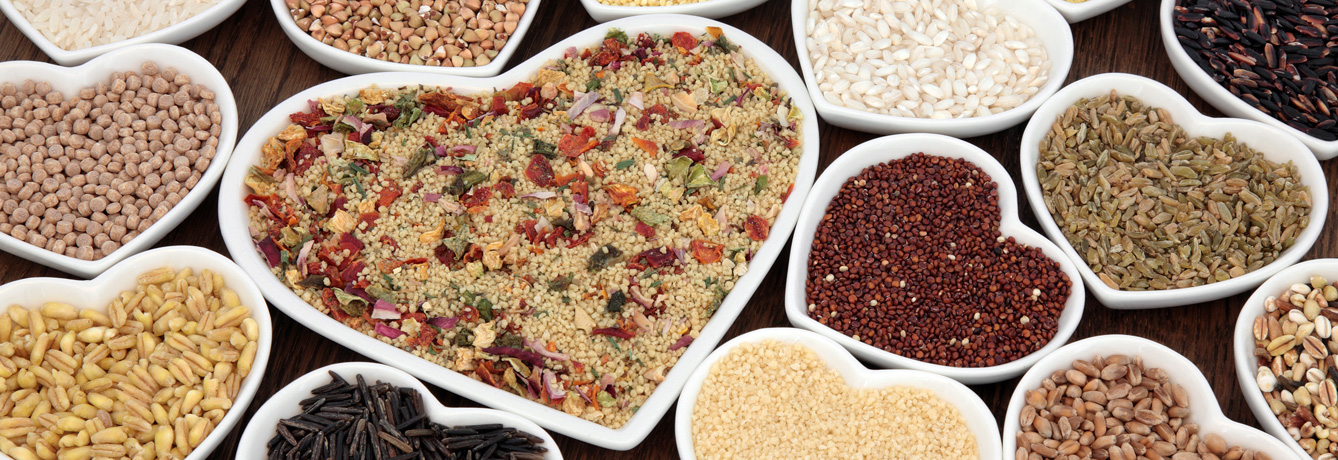Autumn conjures visions of harvested grains, nutritious and delicious staples of seasonal stews, stuffings and breads.In contrast to refined grains, whole grains retain the nutrients — especially fiber — otherwise removed by processing.This helps explain why whole grains can help keep your tummy trim, which in turn helps protect against heart disease and diabetes. No wonder the 2010 Dietary Guidelines for Americans recommend that you make at least half of your 5 to 8 grain servings whole.Toward that end, we provide a roundup of nutrition benefits of a few whole grain varieties to include in your diet:
Brown Rice: Though not strictly a “whole” grain (as its hull is removed) one cup of brown rice naturally contains over 100% of your daily recommended intake of manganese (supports bone development and wound healing).Though slightly chewier in texture, brown rice can be substituted wherever you’d use the white stuff: casseroles, side dishes, even sushi!
Buckwheat: Though technically a fruit (of the same family as the rhubarb), buckwheat is prepared and eaten as a grain — and it’s gluten-free.Buckwheat’s phytochemical rutin acts as a vitamin C booster, strengthening capillaries and regulating their permeability. Buckwheat’s protein may also boost arterial health by limiting cholesterol absorption up to 47%. Though traditionally associated with pancakes and porridge, buckwheat is also the main ingredient in Japanese soba noodles, which perfectly accompany our Asian-Style Salmon.
Quinoa: Also gluten-free, quinoa is actually a vegetable — related to beets! Quinoa contains more protein than other grains — nearly as much as a serving of turkey breast. Even more interesting, a cup of quinoa contains your entire daily recommended allowance of iron and is a complete protein containing 18 amino acids. Quinoa can substitute for rice or make a delicious breakfast, mixed with a bit of maple syrup.Do rinse quinoa before preparing, however, to remove bitter-tasting saponins — the plant’s own natural insect repellent.
Barley: Tops among whole grain in fiber content, providing nearly a quarter of your daily needs in just one serving. In particular, barley contains a type of fiber called beta-glucans that may lower total cholesterol levels including LDL (bad cholesterol) and triglycerides. Barley’s also interchangeable with rice; since it readily absorbs liquids, it can help thicken soups and stews.
Oats: A mineral marvel, supplying four times your daily manganese needs, plus your complete RDA for phosphorus (works with calcium to promote strong bones and teeth), as well as an excellent source of iron, magnesium, zinc, copper and selenium.Of course, oats are most famous for their soluble fiber, which helps regulate cholesterol and reduce diabetes risk. Enjoy oats in our Cran-Apple Crisp at your holiday gathering.
Amaranth: According to folklore, this gluten-free grain, was a main food source of the Aztecs, who also used it in religious rites.Today amaranth deserves worship as a top source of calcium — providing as much per serving as a glass of milk. Plus, amaranth’s amino acid lysine helps promote calcium absorption. Use amaranth flour in baked goods, or swap amaranth for rice in your rice pudding for a lighter, more nutritious version of the popular dessert.



